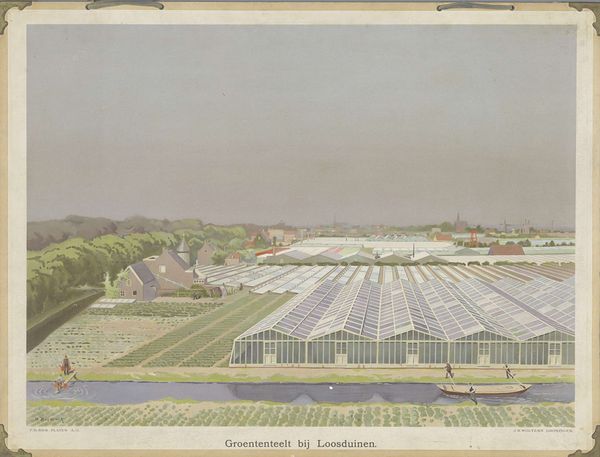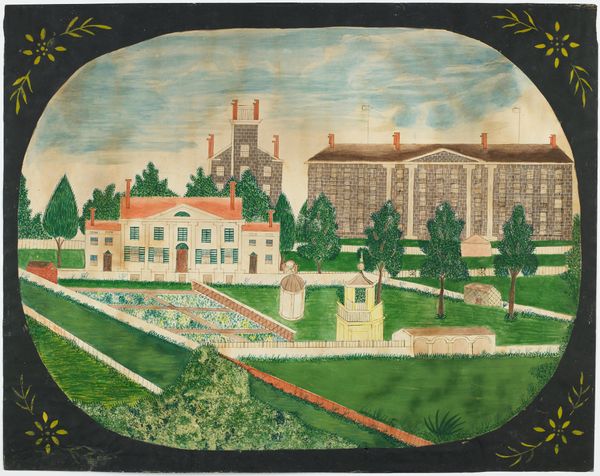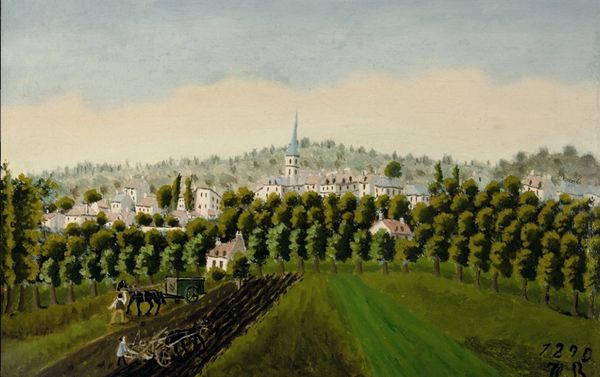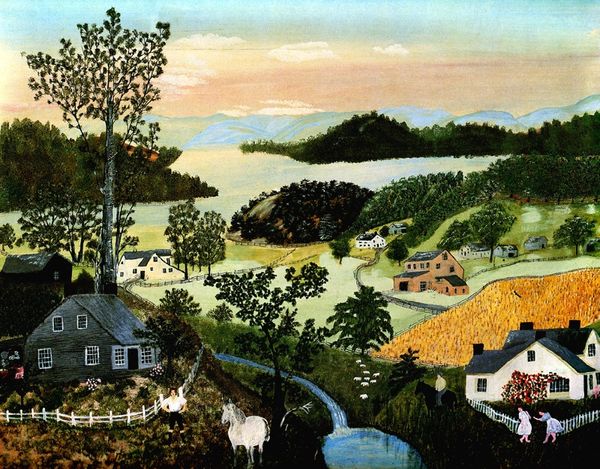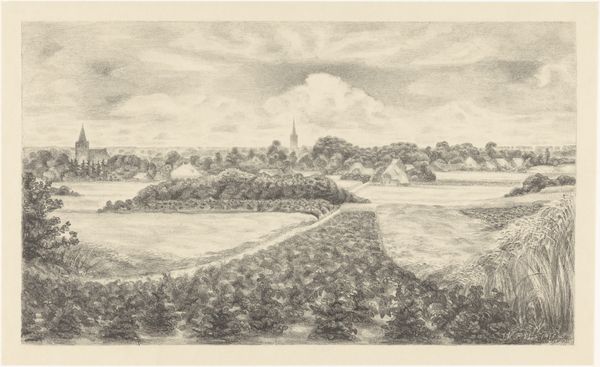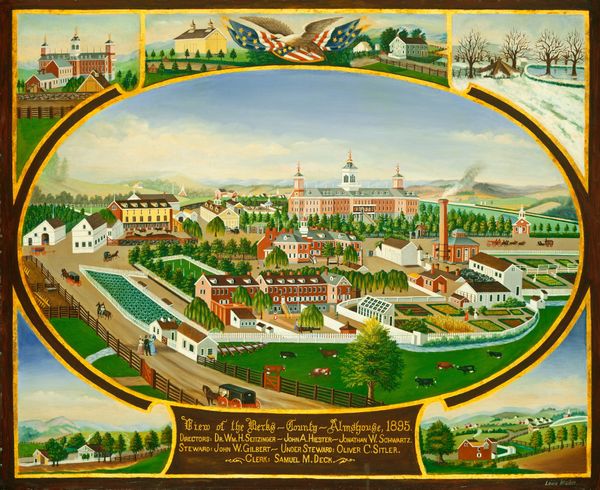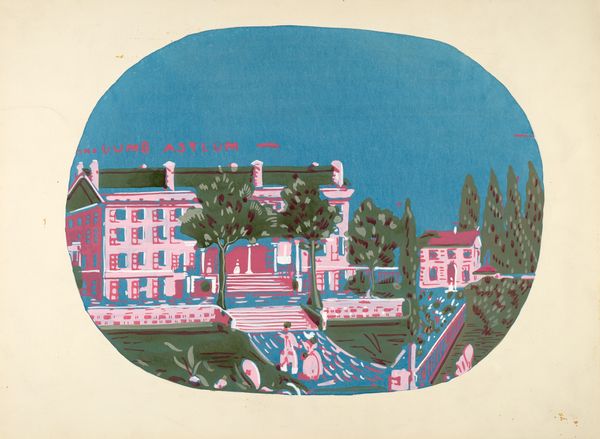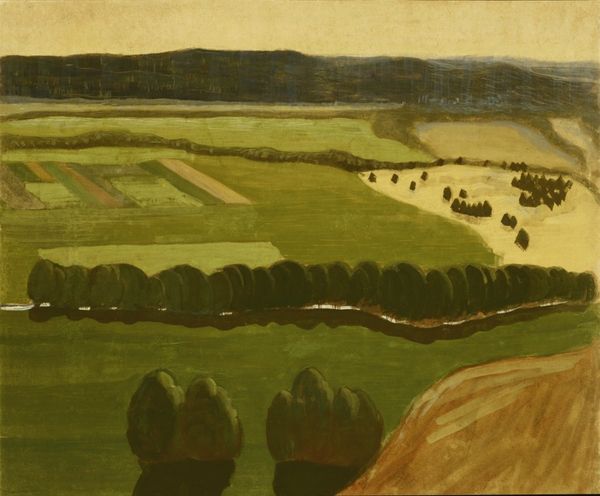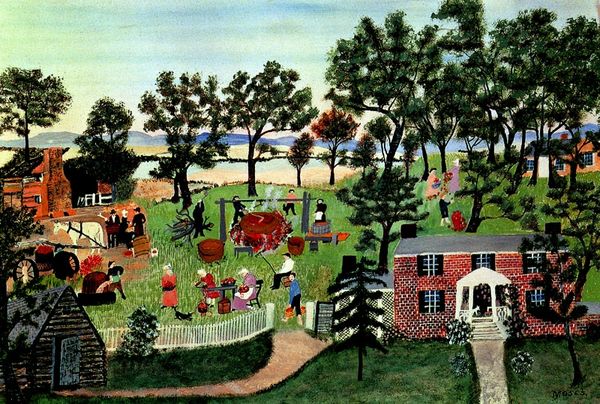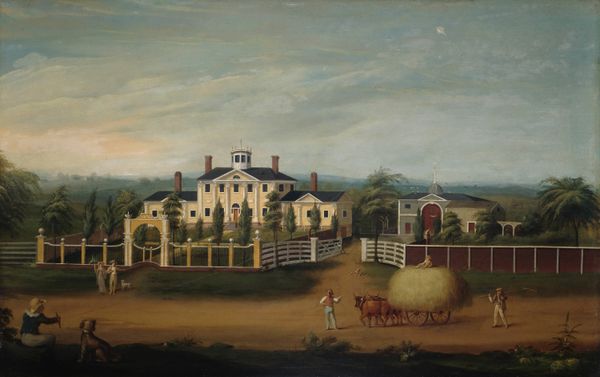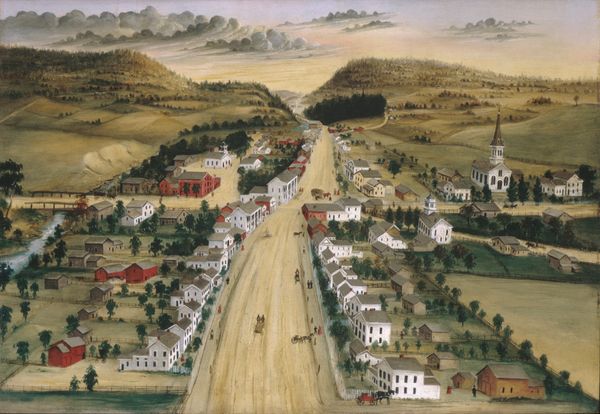
painting, oil-paint
#
painting
#
oil-paint
#
landscape
#
oil painting
#
folk-art
#
naïve-art
#
naive art
#
genre-painting
#
regionalism
Dimensions: overall: 64 x 88.5 cm (25 3/16 x 34 13/16 in.) framed: 77.1 x 100.9 x 5 cm (30 3/8 x 39 3/4 x 1 15/16 in.)
Copyright: National Gallery of Art: CC0 1.0
Editor: So this is Charles Hofmann’s "View of Benjamin Reber's Farm," an oil painting from 1872. It’s got this kind of charming, folk-art feel to it. It's just so…peaceful. How do you interpret this work? Curator: This work offers us a glimpse into cultural memory, specifically of rural Pennsylvania. Notice the careful detailing of the farm and the surrounding landscape. Fences act as key signifiers. What emotional weight do these fences bear? Editor: Well, literally, they contain things...and keep other things out? Curator: Precisely! Fences visually denote boundaries. In art, they often signal control and ownership, separating cultivated space from the wild. The fences could evoke the values associated with settled agrarian life. Also, think about the bridge, appearing fragile and thin. What message could it send to its contemporary viewers? Editor: That maybe civilization is just this thin layer on top of nature? And Hofmann's very deliberately chosen composition conveys this sentiment? Curator: Exactly! The arrangement, almost a bird's-eye view, feels staged, intentionally crafted, suggesting perhaps pride and aspiration. This isn't simply a depiction of a farm; it's a symbol. In Pennsylvania "folk art" the location is critical, as communities expressed regionalism strongly. Editor: So it is trying to communicate something deeper about the relationship between the people and their land? Thanks! That makes me see the piece in a whole new light! Curator: Indeed. Visual symbols in art become vessels, conveying not just immediate scenes, but enduring values of community and place across time.
Comments
No comments
Be the first to comment and join the conversation on the ultimate creative platform.

